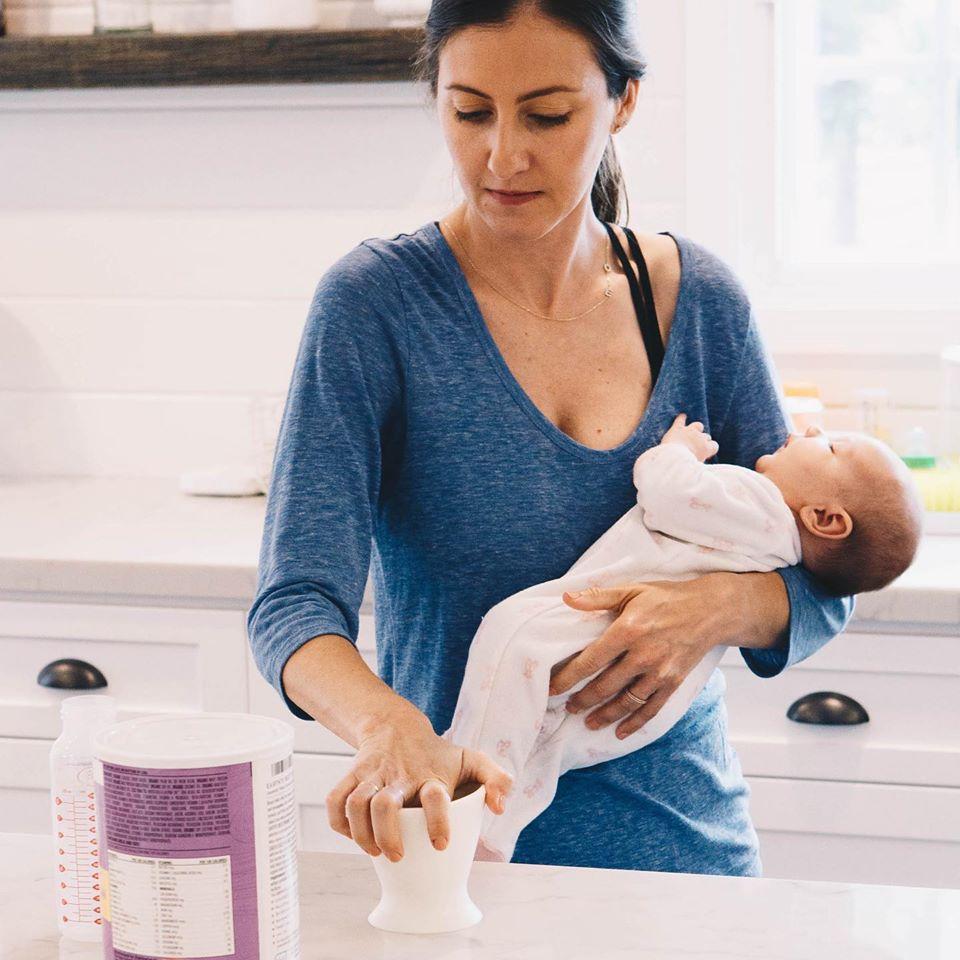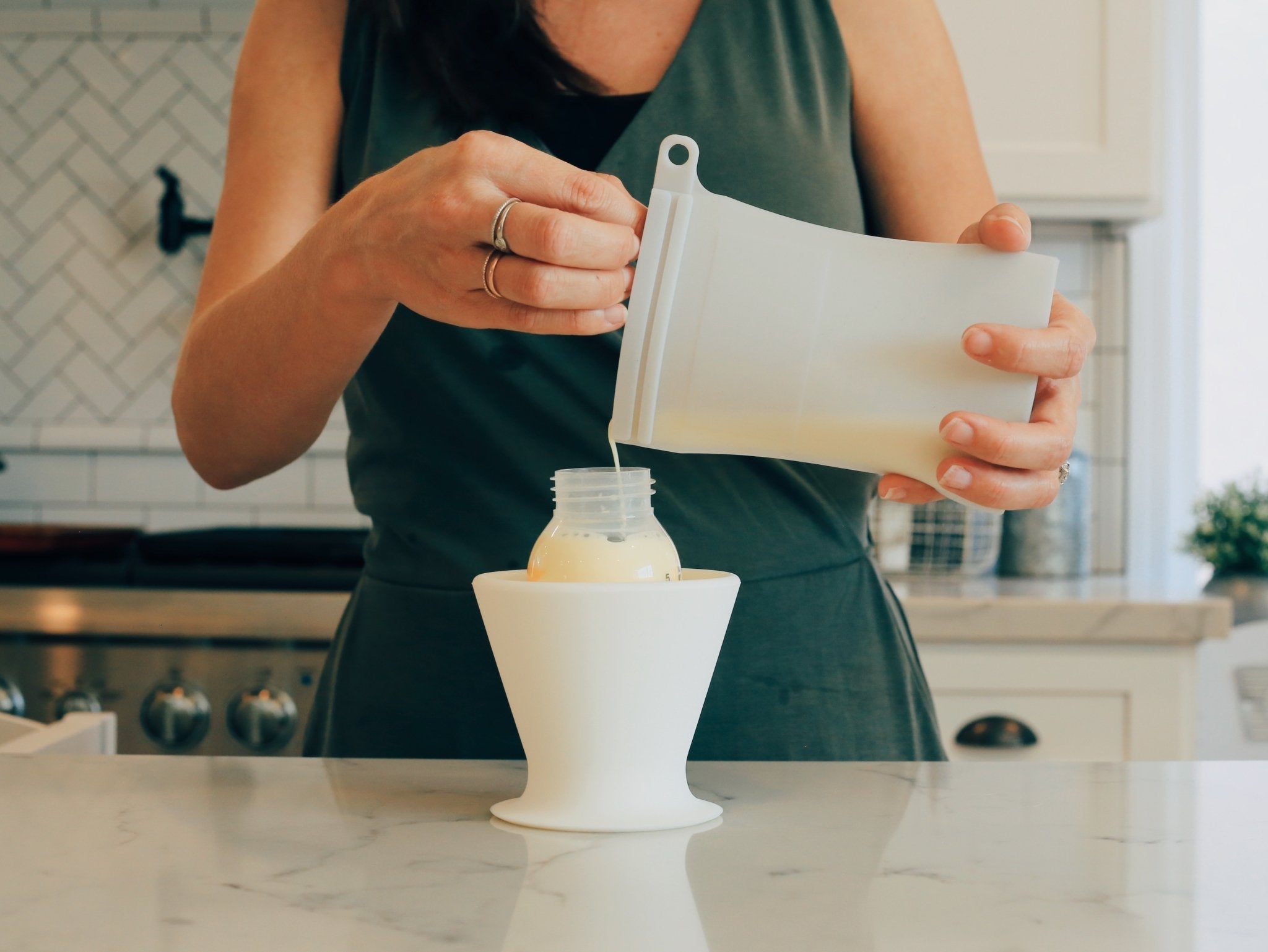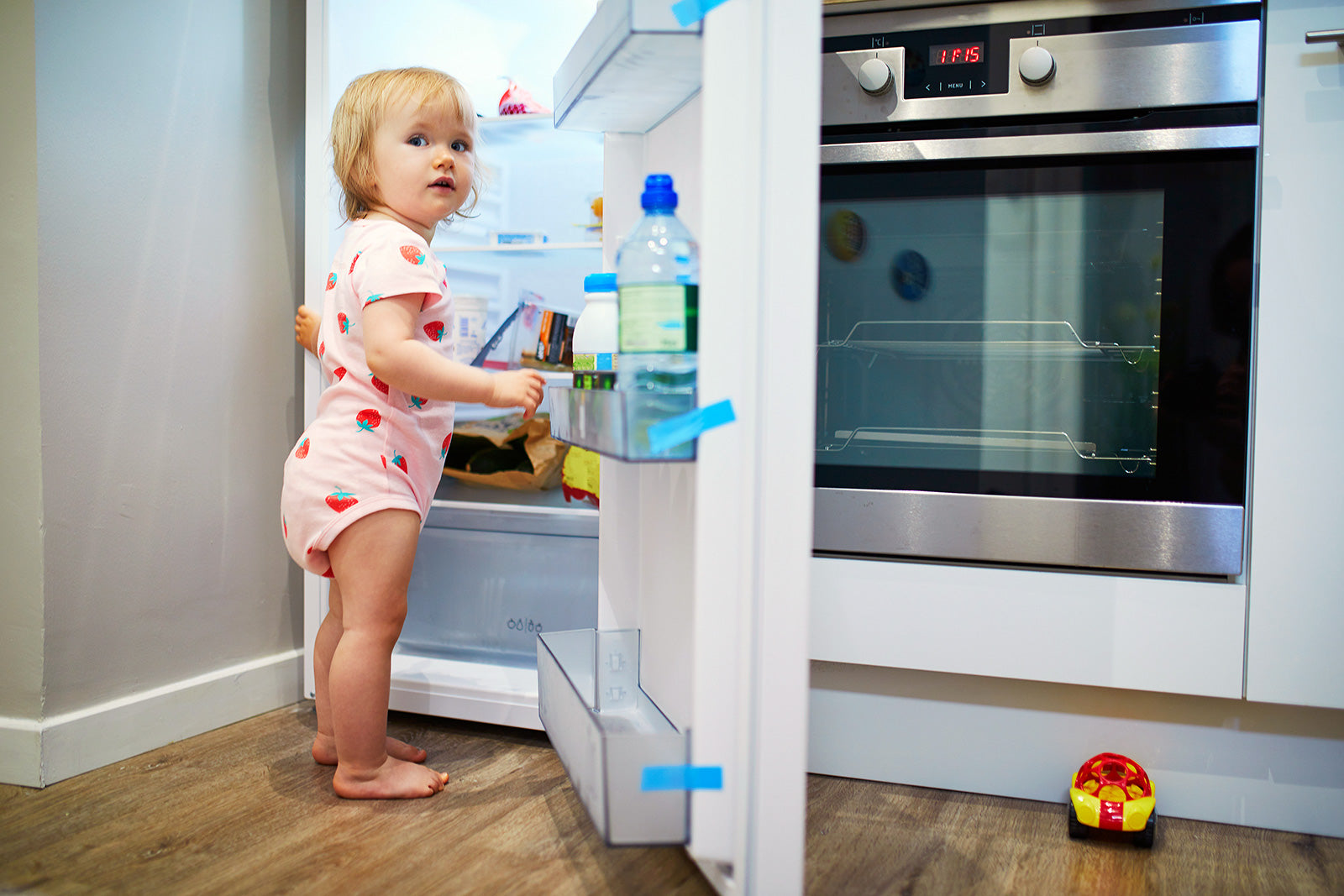How Paced Bottle Feeding Will Benefit Your Baby

We all know it’s not healthy to quickly scarf down food. Not to mention it's bad manners, but eating too fast can lead to overeating. Yet when our babies suck down a bottle in two minutes without coming up for air, we don’t think twice about it and chalk it up to the fact that they were hungry. But guess what? Babies can overeat, too. So today we’re talking about paced bottle feeding, a way to bottle feed that prevents this.
What is paced bottle feeding? Paced bottle feeding is the practice of slowing down a baby’s bottle-feeding to better mimic breastfeeding patterns. This method of feeding teaches babies to better self-regulate taking in breastmilk or formula from a bottle so they know when they are full and don't overeat.
Perhaps you’re asking yourself, wouldn’t a baby know when they are full no matter what? Actually, no. Here we’ll talk about how paced bottle feeding plays a role in a baby’s fullness cues, how else it can benefit your bottle-fed little guy or gal, and how to implement the paced bottle feeding method.

How Paced Bottle Feeding is Different From Typical Bottle Feeding
It’s likely you’ve already bottle-fed a baby before, whether that’s been with one of your own children or feeding a friend or family member’s baby. I’ll venture to guess that there wasn’t a lot of technique required. Hungry baby, feed baby the bottle, baby either finishes the bottle or pushes it away when they’re done.
Now if you have experience with bottle feeding then you do know there IS a lot that goes into choosing a baby bottle that fits the unique needs of your baby as well as several options for nipples with varying flows. Slow flow nipples are usually recommended for young infants or breastfed babies, and faster flow nipples are often used for older babies. Beyond that, most parents don’t necessarily feed their baby the bottle in any special sort of way.
So how does paced bottle feeding differ from typical bottle feeding?
With paced bottle-feeding (or “Baby-led” bottle feeding), on the other hand, you’re giving your baby more control into how your baby takes in their milk and how fast they complete the bottle. You take care to ensure that your baby isn’t getting too much milk at one time. By doing this, you’ll teach your baby to slow down feeding on their own. This is an excellent way to prevent overeating and allows for many other benefits, as well.
Benefits of Paced Bottle Feeding
Before we get into the simple step-by-step process of paced bottle feeding, it’s important to know the benefits of this feeding method. Curious which babies paced bottle feeding benefits?
Paced bottle-feeding can benefit ANY bottle-fed baby. Whether they are fed formula or breastmilk, this method of bottle feeding teaches your baby to better control their milk intake. It matches the way a baby would breastfeed, more slowly and with breaks. Even babies who’ve never been breastfed, however, can benefit from being given a bottle in a paced manner.
So far we’ve discussed the advantages of paced bottle feeding to combat overeating. We’ll talk a bit more about why you want to avoid the practice of having a baby who is overfed, as well as the other reasons why paced bottle feeding makes a great choice.
Multiple benefits of paced bottle feeding include:
- Allows your baby time to feel a feeling of fullness, so they don’t overeat. Too often we give our baby a bottle and they suck it down without coming up for any air. Of course your baby was hungry, but a baby will often drink an entire bottle even if they didn’t need the entire bottle to fill up. This is because when a baby drinks a bottle this quickly, they don’t have time to register a feeling of fullness. Their tummy is already filled with all that milk before the signal even gets to their brain that they are full. Because paced bottle feeding gives time for breaks, etc. your baby has time to recognize when they’re full (as well as if they need more.)
- Avoid stomach upset, gas, and spit-up. An overfed baby is often an uncomfortable one. You know the feeling of eating too much and it doesn’t feel good, right? The same thing can happen to your baby. They may be uncomfortable or in pain or may spit all that precious milk right back up. Slower feedings can prevent this.
- Prevents underfeeding, too. The beauty of paced bottle feeding is that your baby gets to decide how much milk they want to take in instead of you. If you pace a feeding and they drink the entire bottle, it’s much easier to see that they need to be offered more. A baby who quickly drains a bottle before knowing they're full may take another bottle when they didn't actually need it.
-
Helps baby go between breast and bottle. When mothers go-between breastfeeding and bottle-feeding, breastfeeding can be disrupted when a baby feeds to fast from a bottle. A baby may become frustrated on the breast when the flow doesn’t mimic what they’ve come to expect from their bottle.
- Prolongs the breastfeeding relationship. A common occurrence between babies who are both breastfed and bottle-fed is that a mother thinks that her supply is not keeping up with her baby’s needs when in fact, they baby is overfeeding every time they take a bottle. This makes it difficult for a pumping mom to keep up, and will cause the mother to stop breastfeeding before she would prefer. Paced feeding allows a bottle feed to be very similar to a breastfeeding experience. With that said, if you do feel like you can’t keep up with the feeding demands of your baby we encourage you to read, “How to Increase Milk Supply By Pumping.
- Can reduce obesity rate in the long-term. According to this article from the Telegraph, babies who are bottle-fed are a quarter more likely to end up obese. Though there are several factors that play into this, the pattern of overeating in infancy can lead to overeating as a baby gets older. Implementing paced feeding, along with responsive feeding (outline here), helps your baby decide when they are hungry and full.
Though paced bottle feeding is helpful for any baby, it can be especially necessary for premature infants. Verywell Family has great tips for encouraging bottle feeding with a preemie, including pacing the feeding. Premature babies can struggle to coordinate bottle feeding with breathing, but conducting it in a paced way, where you’re giving purposeful pauses for them to breathe, helps prevent apnea or bradycardia during a feed.
Paced feeding takes a bit more effort, but the advantage it gives to your baby is easy to see.
Implementing Paced Bottle Feeding
Now that you’ve learned how paced bottle feeding can help your baby, it’s time to tell you how to go about implementing the process.
You probably never really thought of bottle feeding a baby as an art form, but let’s be honest, is anything really ever simple with a baby?! Luckily, paced bottle feeding is easy to do once you know how to do it.

Steps for a Paced Bottle Feeding:
- Wait for hunger cues from your baby. Instead of using the clock to guide feeding times, let your baby tell you when they’re hungry. He may show this by putting his hands in his mouth, rooting, making sucking motions, or whimpering.
- Use a bottle with a slow-flow nipple. Remember, we’re trying to slow down the feeding process not speed it up. Using a slow-flow nipple is key in getting started. We recommend using a bökee for easy one-handed bottle prep while you hold your little one.
- Hold your baby upright. Forget what you’ve learned about laying your baby across your arms to feed them. Instead, support your little one’s head and neck to feed them in a semi-upright position. The bottle should be horizontal with the floor.
- Let your baby suck on the nipple first without getting any milk. This is especially important for breastfed babies because milk doesn’t come right away from a breast. Breastfed babies are used to suckling for a minute or so to bring the milk forward and this mimics that.
- Allow for about 20-30 seconds of continuous feeding. Once you start giving your baby the breastmilk or formula from the bottle, this amount of time will allow them to get about 3- 5 good swallows.
- Give your baby a break. After those 20-30 seconds, tip the bottle back and let your baby breathe. The nipple will be left in their mouth, but in a way that no milk will come. When your baby starts sucking on the nipple again, tip the bottle forward so they can drink for 20-30 seconds again.
- Repeat this paced feeding strategy (steps 5 and 6). You’ll continue feeding your baby this way until they show signs of fullness - pushing the bottle away, no more sucking after a break, or turning their head from the bottle. A feeding will take about 10-20 minutes. Your baby may finish a bottle and show continued hunger (give them more milk) or they may be full before finishing a bottle.
You can see how utilizing the process of paced bottle feeding leaves the decision-making up to your baby. Though our babies need us at this age for most things, those tiny little beings are capable of deciding for themselves when they need more to eat and when they’ve had enough. Though paced bottle feeding isn’t necessary for every baby, it can be helpful for many babies if you're up for giving it a try!




